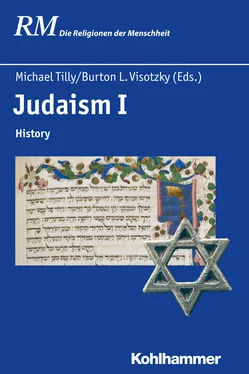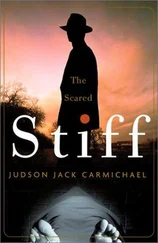On 29 November 1947, the UN General Assembly partitioned the land into Jewish and Arab states. Immediately after the resolution, an Arab uprising tried to prevent the Jewish state. The Haganah fought to secure the areas that the UN allocated to the Jews. When the Palestine Mandate expired without an agreement, on 14 May 1948, the Jewish National Council proclaimed the State of Israel.
The declaration resulted in the Arab-Israeli War of 1948–49, in which between 600,000 and 750,000 Arabs fled or were driven from their homes. In the face of hostilities in Palestine between 1945 and 1952, more than 600,000 Jews fled from Arab countries to the Jewish state. The so-called law of return allowed all Jews and their non-Jewish partners or children to immigrate to Israel as citizens.
In 70 years, Israel’s population multiplied from approximately 800,000 to 9 million. Although Israel defines itself as »Jewish and democratic,« the Jewish majority accounts for 75 percent of the population, while the Arab minority constitutes 20 percent. Integration of the territories conquered in 1967 will either lead to Jewish minority rule over a majority Palestinian population or to a binational community.
University of Michigan Professor Deborah Dash Moore begins in 1654, when Governor Peter Stuyvesant received orders from the Dutch West India Company to allow Jews in the colony. Before the century ended, New York Jews created the first synagogue. During the early republic, Charleston, South Carolina attracted the largest concentration of Jews. In 1824, a group of young Jews there petitioned for shorter services, explanations of Hebrew prayers, and a sermon in English. When the leaders rejected their requests, the young men and women established a Reformed Society of Israelites. They introduced female voices, instrumental accompaniment, and revised the prayer book.
After the Civil War, Rabbi Isaac Mayer Wise established the Hebrew Union College to train Reform rabbis. But at the 1883 banquet honoring the first graduates, non-kosher shellfish was served, infuriating several rabbis. They guided congregants away to establish the Jewish Theological Seminary (JTS), which shaped Conservative Judaism.
As a generation of American Jewish women matured, they initiated activism. Occupying pews with their husbands, women began synagogue attendance. Hannah Greenberg Solomon organized Jewish women for the 1893 Columbian Exposition. She recruited for a Jewish Women’s Congress. The National Council of Jewish Women embodied a politicized conscience.
The American Jewish Committee was formed to »prevent infringement of the civil and religious rights of Jews …« Mordecai Kaplan organized Friday night lectures on the Lower East Side that attracted modern Orthodox Jews. Within a year that congregation became Young Israel. It received guidance from Rabbi Bernard Revel, who came to lead immigrant religious educational institutions, which reorganized as Yeshiva College. Kaplan also established the Society for the Advancement of Judaism and its movement, Reconstructionism. He had already introduced the Bat Mitzvah to mark the equality of Jewish girls.
American Jews emerging from World War II created »a culture of commemoration« memorializing the six million Jewish victims of the Nazis and turned to Zionism, partly in response to the suffering of survivors. They integrated Israel into their consciousness. The three Jewish movements all included youth groups, summer camps, and sisterhoods. By the end of the postwar period, over five and a half million American Jews had transformed Judaism.
12 Judaism in Europe after the Second World War
Dr. Kerstin Armborst-Weihs of the Centre for Continuing Education at the University of Education (Pädagogische Hochschule) Karlsruhe writes on Judaism in Europe and the former Soviet Union post-World War II. She charts the after-effects of the murder and deportations of Jews that took place.
Many survivors could scarcely imagine rebuilding Jewish life. Zionism was attractive to a large proportion of those who had been uprooted. Those who stayed in Europe faced reintegration into society depending on national contexts. The immigration of Jews from North Africa and the Soviet Union changed European Jewish communities fundamentally.
Armborst-Weihs considers displaced persons in the years following the war. She turns to the exodus of Jews from the former Soviet Union, that unfolded in the 1960s through the 1970s. Much of the emigration was directed to settling in the State of Israel, changing its social and political complexion.
In Poland, the effects of the Holocaust continue to stunt the small Polish Jewish population—once a community of 3.5 million Jews. Today, there is an appreciation of the legacy of Polish Jewry, with a museum, kosher restaurants, and klezmer music concerts—but not very many Jews. Hungarian Jewry was similarly annihilated. Its slow recovery has recently been checked by rising anti-Semitism and government opposition.
Germany slowly began a resurgence of Jewish life, buttressed by a huge influx of Soviet Jews. It recently opened both liberal and orthodox rabbinical schools to provide leadership for the burgeoning Jewish population. The German government has been supportive of this renaissance.
Great Britain’s Jewish population was not appreciably affected by the Holocaust. In the post-war decades, British Jewry was characterized by social mobility. Contrary to pessimistic forecasts of demography of British Judaism for the late 20th century, recent figures indicate a growth in population.
Zionism found widespread approval in French Jewish society. Despite some emigration from France to Israel in recent years, the Jewish community in France is the third largest in the world. This is in part due to an influx of North African Jewish immigration, which changed the social make-up.
Armborst-Weihs concludes with surveys of the Italian, Spanish, and Greek Jewish communities. Owing to the diversity of traditions and interests within Judaism in Europe, many different Jewish identities have developed.
8.2 Judaism II: Literature
13 The Jewish Bible: Traditions and Translations
Professor Emeritus of the Hebrew University in Jerusalem, Emanuel Tov describes the TaNaKh, Torah (Pentateuch), Nevi’im (Prophets), Ketuvim (Writings) as Jewish Scripture that has come down from antiquity in complex ways. The traditional Jewish Bible, or Masoretic Text (MT) represents only one of the early text traditions, but is accepted by all streams of Judaism since the first century CE. The oldest source of MT is the Aleppo Codex, ca. 925 CE. All the printed editions of the Hebrew Bible and most of its modern translations present a form of MT.
The main site of ancient biblical manuscripts is in the Judean Desert near Khirbet Qumran, south of Jericho near the Dead Sea. There, remnants of some 950 biblical and non-biblical scrolls were found in eleven caves. Twenty-five texts found in the Judean Desert at sites other than Qumran display almost complete identity with the medieval texts. The Qumran biblical texts themselves, however, depart from MT. In view of this disparity, we conclude that for the Qumran community, the various Scripture texts were equally authoritative. Most likely, the biblical text was known in different ways not only in Qumran, but throughout Israel.
Before the discovery of the Dead Sea Scrolls, scholars were not aware that MT existed in the same consonantal form as early as the last centuries BCE. The Hebrew and translated texts used within rabbinic Judaism only reflect MT. Most scholars are now of the opinion that LXX manuscripts derive from a single translation into Greek that was repeatedly revised to conform to the proto-MT. In the first century CE, when the Christian New Testament writers quoted the earlier scripture, they used the wording of the LXX, since the NT was written in Greek.
Читать дальше







